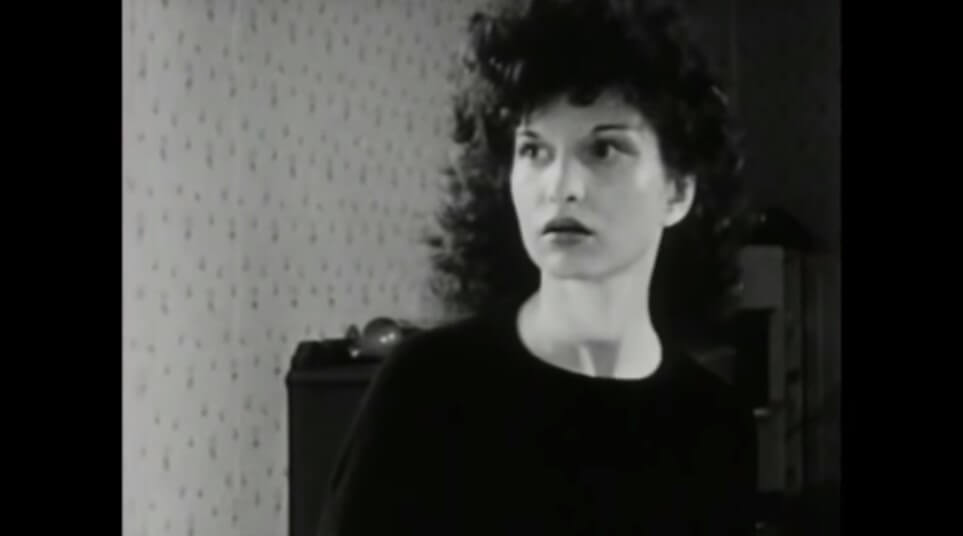As the daughter of Ukrainian immigrants became the main avant-garde director of America
'14.04.2018'
Source: Alexey Viktorov, jewish.ru
The daughter of a Ukrainian Trotskyite, she has made her way to Congress in the USA. But having been disappointed in politics, she began to shoot amateur short films. Soon, Maya Deren became the main avant-garde director of America: films, dreams, surrealistic sketches, but most importantly - fascinating tribal rituals in Haiti.

She was sure: for a good movie there is no need for luxurious decorations and a huge budget. Money creates addiction, and cinema should be free. She did not accept the monopoly of Hollywood and did not intend to abide by the Hayes Code, obliging film industry participants to abide by certain rules. At some point, she just picked up an 16-millimeter camera and started shooting. At first, she showed the shot films only to friends, then to all who wished, which each time became more and more. On the wave of friendly recognition in 1947, Maya Derain decided to take her film to the Cannes Film Festival. Her film “Midday Networks” created a real sensation and won the International Prize for experimental cinema. The following films by Maya Derain firmly secured her title of “mother of the American avant-garde”.
She created a movie, “desperately” danced, borrowing many movements from voodoo rituals, and also loved to sing. The songs she sang seemed exotic to everyone too - they were in Russian or Ukrainian. That's because Maya Deren - the brightest representative of the American independent cinema - was born in Kiev in April 1917, under the name of Eleonora Derenkovskaya. When the girl was five years old, the family moved to the USA - now their last name sounded like Derain. Father Solomon financially softened the process of adaptation in the new place - he passed all the necessary exams and continued to engage in psychiatric activities, as he did at home. In addition, being a Trotskyist, he immediately found political like-minded people in America, and soon brought in the circles of Trotskyist youth and his daughter.
Leonora took a great interest in politics: she entered New York University in the department of political science and joined the ranks of the local socialist movement. Among the socialist activists found and first love - Gregory Bardeyk. She married him, just waiting for the 18 anniversary. But soon Derain lost all interest in politics, and against this background, the marriage fell apart. The girl entered Smith College and began to study the influence of the French Symbolists on American poetry.
Having received an excellent humanitarian education, Eleonora got a personal secretary to the famous American dancer and choreographer Catherine Dunham. This woman - the star of "black dance", and in combination an anthropologist and ethno-choreographer - opened for Derain the ritual dances of the tribes living in Haiti. She introduced the girl to the world of cinema - while filming 1939 in her first film, Catherine took the young assistant everywhere. Thanks to this, Derain met Alexander Hackenschmid (he died in 2004), a novice director and avant-garde photo artist from Prague, who escaped from the horrors of European war and tried to find his place in Hollywood. He was so fascinated by Eleanor that he immediately proposed to her.
Married in 1942, the couple moved to New York. To cheer up her husband, who never found herself in Hollywood, Eleanor invited him to shoot short films - without claims to a wide audience and fame, just for friends. She herself became the ideologue and producer of these films, and the main character. After several trial shorts, they presented their first film, Midday Nets, to their friends. In the credits, Eleanor was already listed as Maya Deren. A new name came up with Alexander. He found it in mythology books - that was the name of Buddha’s mother.
Recalling the work on the “Midday Networks”, Derain wrote: “I thought about the possibilities of a subjective camera, which can show what I see in myself without the help of a mirror. Thus was born a film about a girl who fell into a dream and saw herself in a dream. The film is based on inner experiences. This is not a retelling of an event that others could have witnessed in everyday life. ” This picture-dream was subsequently included in the National Register of Films as a masterpiece of surrealism and is recognized as one of the most significant experimental films of the 20th century. Like the rest of Maya’s films, the picture doesn’t have a clear storyline and is overflowing with symbols. Abrupt transitions create the impression of movement in space and time. In this 14 minute short film, the heroine, following a figure in black with a mirror instead of a face, returns to her house, sits in a chair, closes her eyes and sees ... However, it’s better to watch this movie once. And make sure that the films of Derain leave endless scope for interpretations.
Other works followed Midday Networks. "On the ground" and "The Witch cradle" were, again, movie-dreams. But “Ritual in the Transformed Time” and “Divine Riders: the Living Gods of Haiti” were devoted to choreography. Derain often said: “If I were not a director, I probably would have been a dancer. But cinema is a wonderful dance. In the cinema, I can make the world dance. ”
Having dedicated the film to the traditions of different tribes in Haiti, Maya also wrote a book about the island’s culture. It happened like this. In 1946, Derain received a grant from the John Simon Guggenheim Memorial Fund and decided to use this money to study culture in Haiti. For the next eight years, Derain often traveled to the island - in total, she spent there 21 a month, shooting hundreds of meters of film and collecting unique information on local ethnography. Conceived by her film reflected the essence of the relationship of deity and man. In order to gain a deeper understanding of tribal psychology, Derain did not just practice their rites herself. The islanders allowed her to participate in the ceremonies: they accepted them into the circle of initiates and called them "white black."
American director Stan Brakedzh told the following story. Once he was invited to a wedding in New York. Maya was supposed to lead the marriage ceremony in the tribal traditions of the Haitians. At the last moment, the future newlyweds decided to abandon the Voodoo ritual. Maya reacted to this calmly at first, but after a few minutes she fell into a rage. As Brackage said: “With a roar that horrified all those present, she crushed all the dishes in the kitchen and, being a small woman, managed to raise the refrigerator and throw it from one corner of the kitchen to another. It is impossible to believe, but it is a fact. She was in a trance of the spirit of Papa Loko, who was unhappy with how he was treated at the wedding. ”
The last years of his life Derain traveled a lot, popularizing American avant-garde cinema. These were some kind of lecture tours - she arranged in cinemas to watch her films and other avant-garde works, and after the sessions she discussed them for a long time with the audience. Maya Derain died in 1961, at the age of 44. She bequeathed her ashes to disperse over Mount Fuji of the Japanese island of Honshu.







